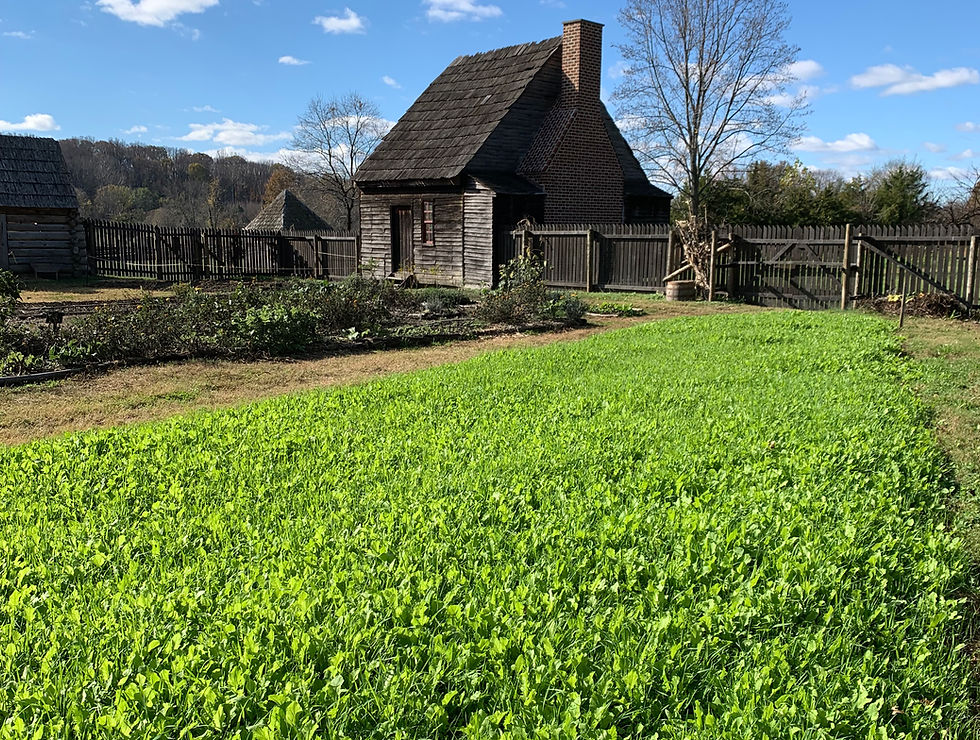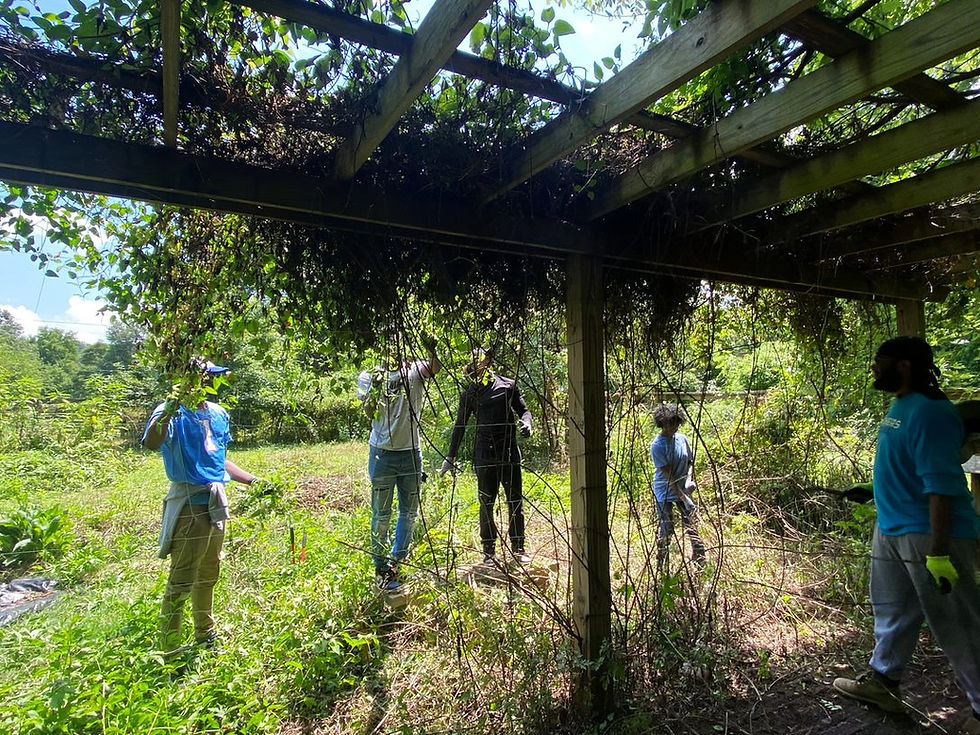Digging Into Soil Health
- Accokeek Foundation

- Mar 26, 2015
- 2 min read
Spring has finally sprung, and before our eyes the snow has melted to reveal snowdrops and crocuses in full bloom. On the farm, the lambs and calves are frolicking in the fields, and thanks to the lengthening days, the chickens are nearly in full egg-laying mode. All this is nature trying to tell you that it is time to get your garden started for the season. After a long winter of perusing garden catalogs and forcing pots of seedlings, the moment has finally arrived for you to plant those little babies and nurture a new crop of botanical beauties to maturity. But before you poke that first seedling into the ground, make sure you aren’t overlooking the most important part of your garden – the soil. The FAO has declared 2015 the
International Year of Soils, recognizing that healthy soils are the basis for healthy food production. According to the FAO, sustainable soil management could produce up to 58% more food, nearly meeting the need to increase global food production by 60% by 2050. So we don’t need more land to feed a projected population of 9 billion, we need healthier land. In celebration of soil, here are a few ideas on how you can make yours healthier and get your garden off on the right foot (or root):
Start a compost pile – An easy way to return vital nutrients to the soil is through a compost pile. It is simple to maintain and will still produce rich humus from your organic waste no matter how much you neglect it. Plenty of household waste that you may not think of as compost can be added to the pile – like cotton swabs, pet hair and leather to name a few – greatly reducing the amount that sees the dumpster. Contact your state extension office for resources on starting your own backyard or worm bin.
Go organic – By maintaining your soil health through organic practices, you steer clear of synthetic fertilizers and pesticides that can rob the soil of nutrients and harm humans over the long term.
Don’t till – Make your life easier and help your soil in the process by not tilling your garden when you plant. Tilling disturbs beneficial soil organisms like worms and fungi, and creates air pockets that make it difficult for plants to find water and nutrients. Instead plant cover crops, use mulches and cover areas to be planted with cardboard and straw to build up, instead of break down, soil habitats.
Lose the lawn – Incorporating permaculture principles, like perennial cropping, use of native species and planting in guilds, into your garden design will help to build up healthy soils over time while creating a productive edible landscape that is far better than grass for you and the environment.
Visit the Accokeek Foundation – Public programming in March and April is all about the unexplored world of soil. Starting March 28th, the Visitor Center will feature a walk-in soil exhibit complete with recorded subterranean sounds! This will be in conjunction with an interactive experience on the National Colonial Farm where visitors share their newly acquired soil wisdom with the Boltons to encourage them to take up more sustainable farming practices. Additionally, the Modern Homesteading workshop on April 19th teaches participants how to make their own biochar at home to increase the amount of carbon in their soil and reduce greenhouse gas emissions.
–post written by Heather Leach, Agriculture Education Manager







